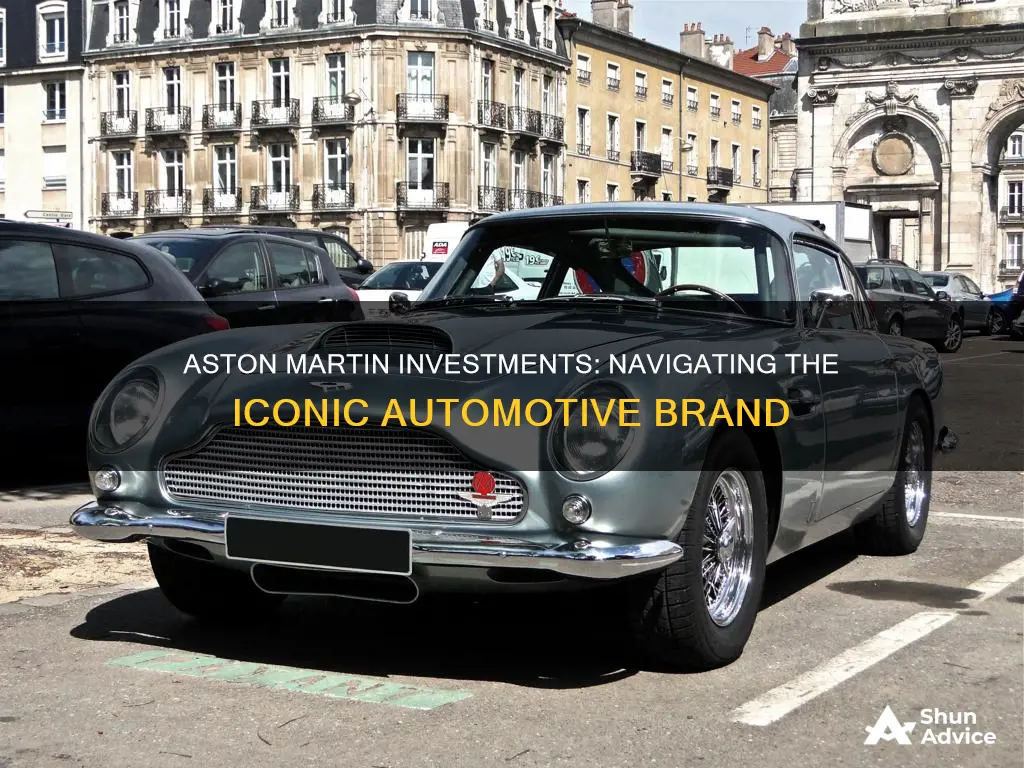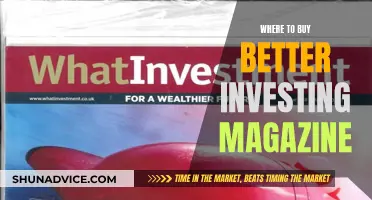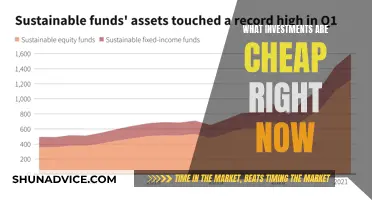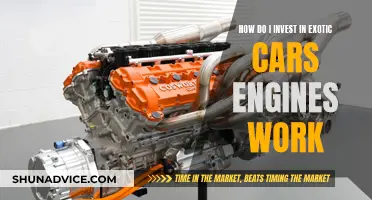
If you're looking to buy an Aston Martin as an investment, there are a few things to consider. Firstly, it's important to distinguish between modern and classic models. While any classic model is generally considered a great investment, modern Aston Martins are not typically seen as investment opportunities unless they are limited editions. When it comes to budget, the general rule is that the more you have to invest, the more you're likely to make. However, even with a smaller budget, you can still enter Aston Martin ownership and see a good return.
For those with a budget of £25,000-£50,000, the DB7 is a great option as it's starting to become a classic. If your budget is at the higher end, you might consider a DB7 Vantage, while a Volante could be an excellent choice if you have up to £50,000 to spend. With a budget of £50,000-£100,000, you could target a 1970s V8, which is likely to require some restoration work. At this price point, you might also be able to get your hands on a DBS six-cylinder or an AM Vantage, which was a later version of the DBS with a V8-type front.
If you have around £200,000 to invest, you could consider a DB6, which is extremely rare, or opt for a more readily available option like the DBS six-cylinder or a 1980/81 V8 Vantage. With a budget of £400,000, you enter DB4, 5 and 6 territory. While you might be able to get a fabulous DB5, it's more likely to be a restoration project. Alternatively, you could target a DB4 or DB6, or even a 1988 V8 Vantage X Pack.
For those with a higher budget of £600,000-£700,000, the celebrated DB5 comes into play. You could also consider a DB6 convertible or, if you're lucky, a DB4 or DB5 convertible. Regardless of your budget, it's important to remember that an older car doesn't have to be in excellent condition to be a great investment, as long as it's well maintained.
| Characteristics | Values |
|---|---|
| Price range | £20,000-£40,000 for older models; £120,000 for the new Vantage |
| Classic models | DB4, DB5, DB6, DB7, DBS, V8 Vantage |
| Current models | Vantage, DB11, DBS Superleggera, DBX SUV, Valkyrie hypercar |
| Limited editions | One-77, V12 Zagato, V600 Le Mans |
| Other considerations | Low mileage, positive press and reviews, fewer owners, maintenance record |
What You'll Learn

The DB7: a good entry point into Aston Martin ownership
The DB7 is your entry point into Aston Martin ownership today. It was always intended to be an 'affordable' Aston Martin, although one person's 'affordable' is another person's hugely expensive. The fact that you can pick up a well-preserved DB7 for around £30,000 puts ownership in an entirely different bracket to that of the DB5 and DB6. If you can afford the latter, then clearly, that's what you're going to go for, but the relatively low price of the DB7 makes it an ideal alternative for those with less cash to splash but the desire to own an Aston Martin.
The DB7 was produced by British luxury car manufacturer Aston Martin from September 1994 to December 2004. It was designed by Ian Callum and Keith Helfet as a grand tourer in coupé and convertible bodystyles. The six-cylinder DB7 was based on the Jaguar AJ6 engine and was positioned as an "entry-level" model below the hand-built V8 Virage. This model was the most-produced Aston Martin automobile up to that point in time, with more than 7,000 built before it was replaced by the DB9 in 2004.
The DB7 was made mostly with resources from Jaguar Cars and had the financial backing of the Ford Motor Company, owner of Aston Martin from 1988 to 2007. The DB7's platform is an evolution of the Jaguar XJS platform, though with many changes. The front and rear suspension of the DB7 are basically Jaguar. The rear suspension is the E Type Jaguar, while the front suspension is the Mark 2 Jaguar with some aspects shifted around. Even the engine block is pretty much a supercharged Jaguar engine block, while the floor pan of the car is Jaguar XJS.
The DB7 began life as a successor to the Jaguar XJS envisioned by Tom Walkinshaw of TWR. Walkinshaw had been impressed by the XJS' potential after driving it in the European Touring Car Championship in the late 1970s and early 1980s and wanted to re-body the car so it would have more modern styling. He initially wanted to engage Peter Stevens to design such a car but he refused due to his ongoing projects at the time. Walkinshaw then engaged Ian Callum, who was new to car design work at the time, to design the car.
One of the aspects that makes the Aston Martin DB7 such a good investment in the current market is the fact that prices for these cars appear to have gone as low as they’re going to go. It is possible to pick up a car that has seen much better days for around £15,000 to £16,000, but prices really don’t drop any lower than that. At the other end of the scale, for those cars that are still in good condition, the prices have actually started to creep up. This upward pressure is doubtless helped by the fact that older Aston Martin DB7s, from around 1994-95, boast a classic and stylish aesthetic that puts newer models or versions a little bit in the shade.
So there’s the look of the Aston Martin DB7 to take into account, as well as the general state of the market, but none of this would matter if the rest of the car wasn’t so incredibly well put together. Whether you’re looking at the engines, the gearbox or the suspension, you’re looking at cars that were built to last and can still perform today. This quality goes across the board as well; you don’t get so many people looking to invest in an Aston Martin DB7 who insist they want, for example, a Vantage or the original, 6-cylinder version—because they’re all equally well put together and, to be honest, the prices are now pretty similar.
Retirement Planning: The Perils of Starting Too Soon
You may want to see also

The V12 Vantage: a modern classic with fantastic performance
The Aston Martin V12 Vantage is a modern classic with a rich history and impressive performance capabilities. With a powerful V12 engine and a top speed of 200mph, it is a true work of engineering art and the ultimate expression of performance by Aston Martin.
The V12 Vantage was first introduced in 2009, replacing the outgoing V12 Vantage. It was designed to be the ultimate expression of Aston Martin's iconic bloodline, pushing the boundaries of performance and style. The car is equipped with a turbocharged V12 engine, producing 700PS and capable of reaching 0-60mph in just 3.4 seconds. It is the most powerful and dynamically capable V12 Vantage ever created by the company.
One of the key features of the V12 Vantage is its exquisite design. The car has a striking, uncompromised aesthetic that is wider, more muscular, and honed with dramatic aerodynamic features. The interior has also been subtly refined, offering a unique and luxurious experience for the driver. The standard lightweight Sports Plus Seat is trimmed in exquisite semi-aniline leather, with the iconic Aston Martin wings stitched into the headrest.
In terms of performance, the V12 Vantage delivers on all fronts. It offers the highest levels of driving dynamics, outrageous performance, and colossal levels of torque. The eight-speed ZF automatic gearbox has been specifically tuned for the V12 Vantage, ensuring fast and dynamic gear shifting while also providing refinement and usability. The car's handling is exceptional, with a wider track, stiffer springs, and new adaptive dampers for precise control and effortless comfort.
The V12 Vantage also has a rich heritage, dating back to Aston Martin's use of a 4.5-litre V12 engine in the DP115 prototype racing car in 1954. The modern V12 Vantage is a fitting farewell to an Aston Martin icon, combining power, style, and performance in a way that is truly unforgettable.
When it comes to investing in an Aston Martin V12 Vantage, it is important to consider the mileage, model desirability, and maintenance record. With careful consideration and proper care, the V12 Vantage can be a fantastic investment for collectors and enthusiasts, offering a unique driving experience and the potential for future appreciation in value.
The Future of Investing: Navigating the Complex World of 'Will Invest' Tense
You may want to see also

The DBS: an upgraded version of the DB9
The DBS is an upgraded version of the DB9 and was Aston Martin's flagship car from 2008 to 2012. It features several improvements over the DB9, including an upgraded transmission and a revised engine. The DBS also has a new Active Damping System to handle all weather types, and its design has aged very well. Even by today's standards, it is still a very capable car.
The DBS is a more accomplished, focused, and powerful car than the DB11, with a price tag of a quarter of a million with options, placing it in pretty rarefied territory. If you are looking for a mix of affordability and a classic Aston feel, the DB9 is a great option as prices have hit rock bottom for these cars. They are also one of the easiest Aston Martins to buy as they are among the brand's best-selling models.
The DB9 doesn't feature the refinement of later models and is starting to look dated, but its low price makes it a great value-for-money offering. The DB9 is also a good choice if you are looking for an Aston Martin for a European road trip that is stylish and comfortable.
When it comes to investing in an Aston Martin, it is important to remember that not all models are created equal. The classic models, such as cars from the 1950s to the 1990s, are generally considered better investments than newer models. Additionally, limited-edition models, such as the rare and exotic One-77 or a V12 Zagato, are also more likely to be good investments.
It is also worth noting that the cost of maintaining an Aston Martin can be high, especially for classic models, so it is important to factor in maintenance and repair costs when considering your investment.
Retirement Riches: Unlocking the Best Investment Strategies for Your Golden Years
You may want to see also

The V8 Vantage: a low-mileage car is more desirable
When it comes to investing in an Aston Martin, the general consensus is that classic models are the way to go. While the brand-new cars are likely to lose money, the older models are desirable and likely to increase in value over time.
The V8 Vantage is a good example of a desirable car that is likely to appreciate in value. The Vantage is an incredible-looking car with fantastic performance, and it is highly probable that both the V8 and V12 Vantage will continue to appreciate over the next decade or so, making them a good investment for collectors and enthusiasts.
When it comes to buying an Aston Martin as an investment, it is important to consider the mileage. A low-mileage car is more desirable for a future sale. For example, a V8 Vantage with 80,000 miles on the clock might fetch £22k, but one with 30,000 miles is likely to be closer to the £30k mark. Therefore, if you are looking to invest in a V8 Vantage, opting for a low-mileage car will be more desirable and could result in a higher return on your investment.
In addition to mileage, there are a few other factors that can increase your chances of making money when buying an Aston Martin:
- Finding a desirable model with positive press and good online reviews will likely maintain its popularity over time.
- Considering a limited edition can help inflate a car's demand, such as the V600 Le Mans, of which only 44 were made.
- Choosing a car with fewer owners reduces the risk of any underlying problems or issues.
- A regular maintenance record shows that the car has been cared for and is likely to have been held in quality classic car storage.
While there are no guarantees when it comes to investments, considering these factors when purchasing an Aston Martin can improve your chances of making a profitable decision.
The Name Game: Unveiling Invest 98's True Identity
You may want to see also

The DB9: a mix of affordability and classic Aston feel
If you're looking for a mix of affordability and a classic Aston feel, the DB9 is the perfect choice. While prices for these cars have hit rock bottom, they still offer a great value-for-money proposition. You'll be able to get your hands on one of these without breaking the bank, as they're currently one of the cheapest ways to become an Aston Martin owner.
The DB9 might not have the refinement of the latest models, and it may be starting to look a little dated, but its low price tag makes it an attractive option. And because it was one of Aston Martin's best-selling models, you won't have any trouble finding one in decent condition. This means less maintenance work and more time spent enjoying your car.
The DB9 is also one of the easiest Aston Martins to buy. With its powerful engine and sleek design, it offers a unique blend of performance and elegance that has made Aston Martin one of the most iconic sports car brands in the world.
When it comes to investing in an Aston Martin, it's important to remember that these cars are not just about financial returns. Owning an Aston Martin is about making a statement about taste, style, engineering, and mechanical excellence. It's about the thrill of getting behind the wheel and experiencing the power and precision of a finely crafted machine.
That being said, there are a few things to keep in mind if you're considering purchasing a DB9 as an investment. Firstly, while these cars are more affordable than other models, they can still be quite costly to maintain. Spare parts for Aston Martins tend to come with a hefty price tag, so be prepared for some expensive repairs if anything goes wrong.
Additionally, it's always a good idea to have a thorough inspection done by an Aston Martin expert before finalising your purchase. This will help you identify any potential issues and ensure that you're getting a car in the best possible condition.
So, if you're looking for a mix of affordability and classic Aston Martin style, the DB9 is an excellent choice. Just remember to do your research, set aside a budget for maintenance, and enjoy the thrill of owning one of the most iconic sports cars on the planet.
Retirement Planning: The Residency Conundrum
You may want to see also
Frequently asked questions
The DB7 is a good place to start, as it is starting to become a classic. You can get one for around £25,000. If you have a higher budget, a 1970s V8 is a great investment, or if you want to splash out, a DB5 or DB6 convertible.
This depends on the model and its condition. You can get an Aston Martin for between £30,000 and £40,000, but for this price, it will likely be high mileage and poorly maintained. You can get a V8 Vantage for £22,000, but this will have high mileage. Knock that mileage down to 30,000 and you're looking at £30,000.
The V600 Le Mans, based on the V8 Vantage, is a good option. Only 44 were ever made and they are a lot more expensive than most other Aston Martins, with the cheapest example currently on sale in the UK for roughly $480,000.
Buy the best car you can afford, rather than a high-mileage, poorly maintained car. Get the car inspected by an Aston Martin expert before buying it, and make sure you have money set aside for repairs.
Yes, spare parts can be expensive. For example, replacing brake pads and discs on a V8 Vantage or DB9 will cost around £1000. Slipping the clutch on your V8 Vantage will cost around £3000.







